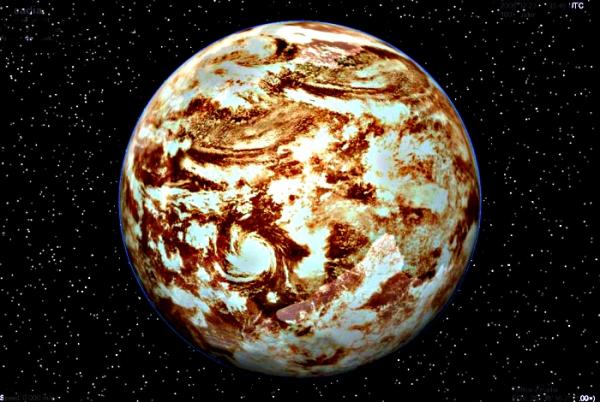BY LETTER
EoGaian Subtype
Young Terrestrial Worlds |
 Image from Steve Bowers and John M Dollan |
Terrestrial worlds of average mass and ongoing geological activity form thick primal atmospheres while between the ages of 100 and 800 million years. During this period the earliest oceans may form, and indeed some of the earliest forms of life might evolve, albeit very primitive microbial-monocellular in nature. The worlds themselves are wrapped within a dense atmosphere of nitrogen, methane, carbon dioxide, and even varying amounts of primal hydrogen and helium. In many cases, this atmosphere is reduced through the slowdown of the geological cycle, although some worlds may lose much of their atmospheric mass because of tremendous impacts with moon-forming planetoids. If the world is massive enough and the atmosphere is not lost, such planets may evolve into Cytherean Types as they mature. Example: Arcadia before Terraforming.
Sometimes called Archean Subtype, after the geological eon in Earth's prehistory.
Related Articles
Appears in Topics
Development Notes
Text by John M. Dollan in his Planet Classification List
Initially published on 24 October 2001.
Initially published on 24 October 2001.






